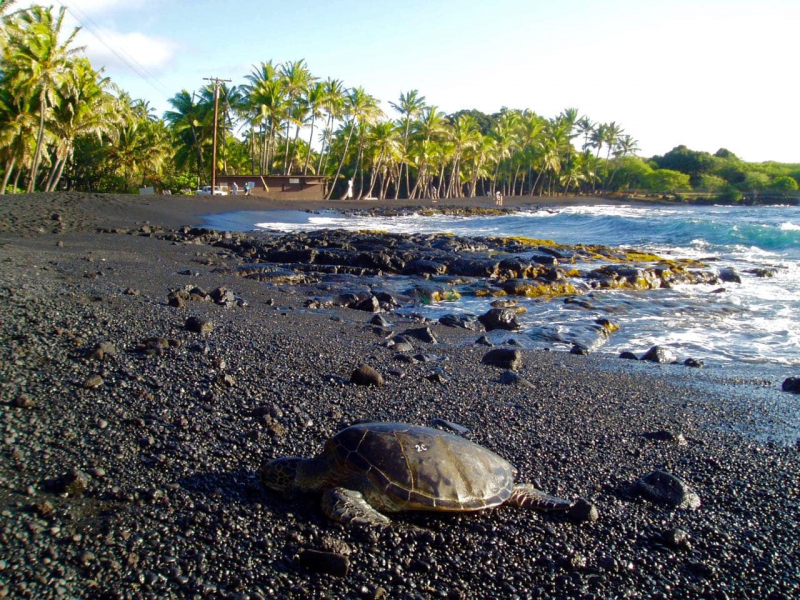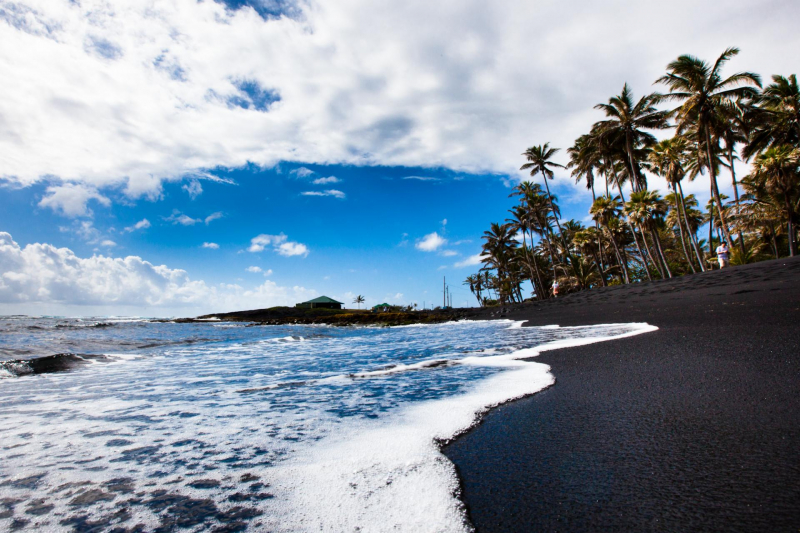Punalu’u Black Sand Beach
Punaluʻu Beach (also known as Black Sand Beach) is a beach on Hawaii's Big Island between Pāhala and Nāʻālehu. The beach contains black sand made of basalt, which was formed by lava flowing into the water and exploding as it cools. This volcanic activity can be found in Hawai Volcanoes National Park.
Punaluʻu is a large and easily accessible black sand beach on Hawaii's Big Island. It's a terrific spot for a brief swim, snorkeling, a short coastal trek, camping with a permit, or stopping for a picnic. Swimming is possible at Punaluʻu, but be cautious while entering the water because there might be strong currents at times. If you have them, bring water shoes since the black sand on the beach heats up rapidly in the sun and there are numerous rocks in the sea that can be painful to step on. The modest boat ramp on the beach's left (facing the water) is the best place to enter the water.
Hawksbill and green turtles frequent Punaluʻu and can often be spotted basking on the dark sand. The hawksbill turtle, also known as the honu'ea, is the rarest sea turtle in the Pacific Ocean. According to researchers, there are less than 80 nesting hawksbill turtles on the Hawaiian islands, with 67 nesting on the island of Hawaii. The endangered green turtle, or honu (Chelonia mydas), feeds on marine vegetation in shallow seas such as Punaluu. The green turtle's favorite meal, red seaweed, thrives on the coral-encrusted rocks in the bay's shallow waters, and the turtles can be observed basking on the black sand beach despite the presence of beachgoers. Since 1982, researchers from the National Marine Fisheries Service, along with groups of students, have been studying the green turtle. Visitors must keep a distance of 20 feet (6.1 meters) from the turtles at all times.
Location: on the southeastern Kaʻū coast, Hawaii














